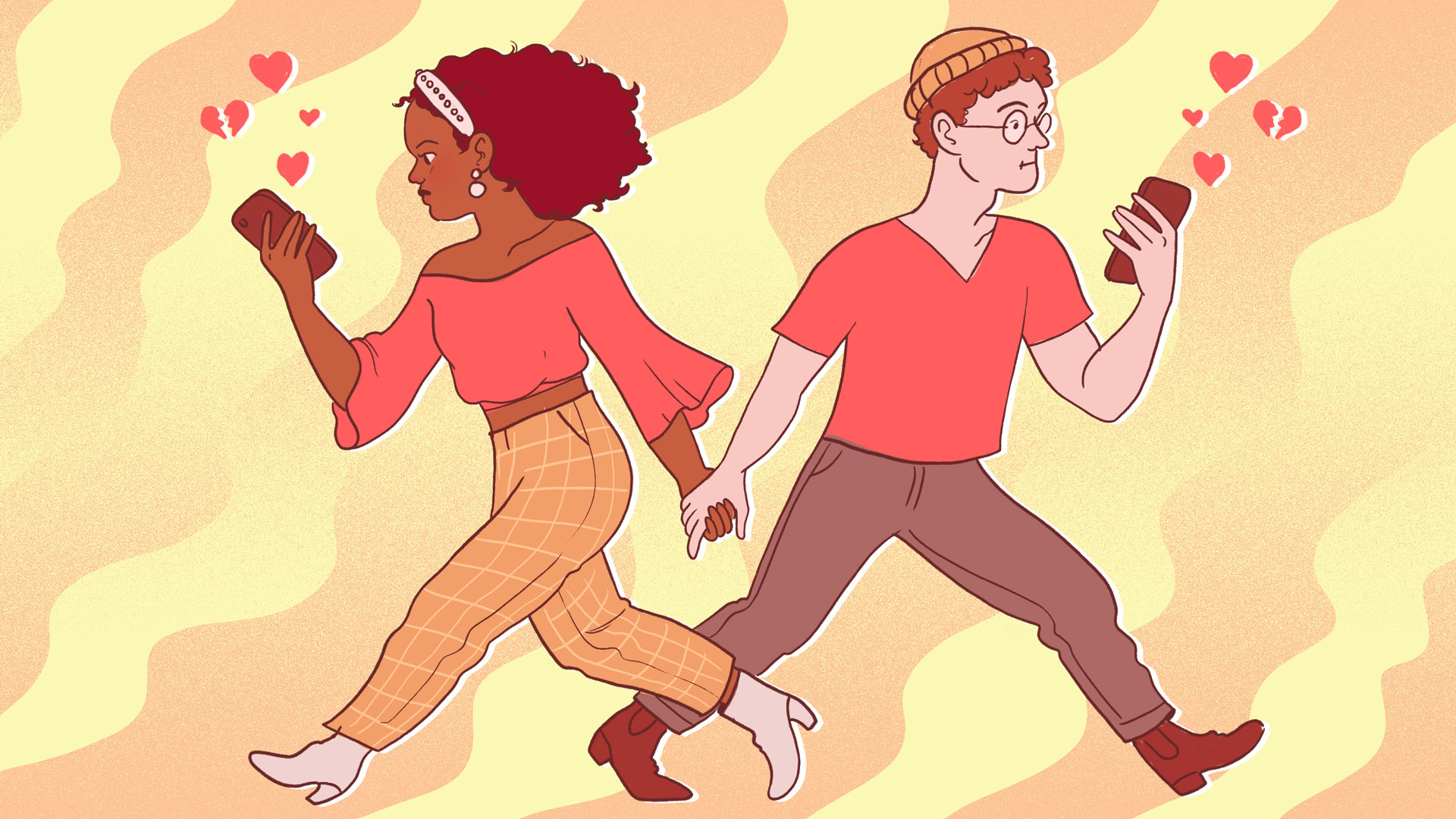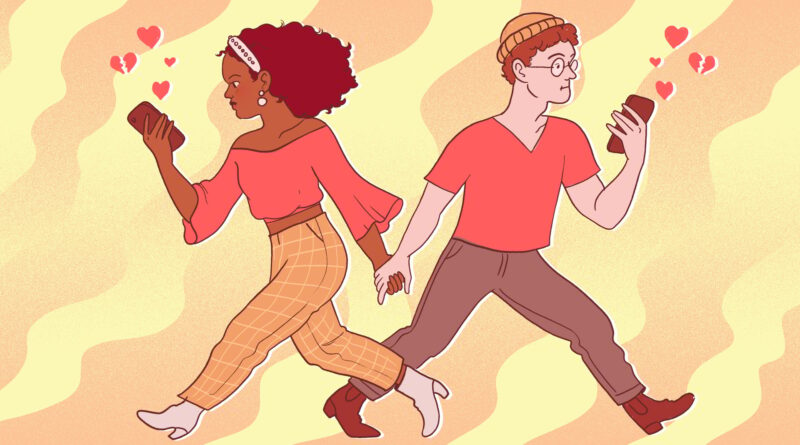How to navigate cuffing season as a single person

It’s officially that time of year when watching The Holiday on a Sunday huddled under a blanket on the sofa is not only acceptable but compulsory. There’s a chill in the air, which means one thing: cuffing season is here. Your Instagram feed will soon be awash with couples cosying up at festive markets, and festive soirées together, it can feel like everyone apart from you has done the unthinkable and found someone to love.
What is cuffing season?
So, what exactly is cuffing season? And is it a real thing, or merely a marketing slogan designed to get singletons swiping while they lie under a blanket watching Gilmore Girls for the 10th time? If you, like me, reside in the camp of single, flirty and (mostly) thriving, you may find this time of year either overwhelming or mentally strenuous. Cuffing season typically starts in mid-October and ends after Valentine’s Day, with the term originally coined in 2011 when it began appearing in college newspapers. The term comes from African-American Vernacular English (AAVE), stemming from the term “cuffed” which means you’re dating someone. This was around the time it was entered into the Urban Dictionary, too.
Dating app Bumble told Mashable that this time of year sees an influx of users logging in and swiping to find a match. So if your dating app profile is suddenly popping off, this could be why.
What’s behind this sudden surge in swiping? This need to couple up and find a mate in the colder months comes down to our biology, too, with a drop in serotonin levels causing us to seek out connection. In the northern hemisphere, our days are getting shorter, nights are longer, and temperatures are dropping. Historically, the colder seasons are when humans would be looking for an additional mate or people to spend that time with, as strength came in numbers to forage for food and get through the tough months with.
The shift in seasons can also trigger Seasonal Affective Disorder (SAD) for some people, a type of depression people experience when the seasons change due to the colder, darker weather. This change in weather and temperature can influence how we feel, due to the fact that our serotonin and melatonin levels change. Serotonin is the ‘happy’ chemical our body produces, so a lack of this could mean we feel lonelier and thus pursue more companionship or physical touch from others. Researchers think that this drop in serotonin could be linked to why we go in search of a mate, and why cuffing season has become commonplace in modern dating.
Want more sex and dating stories in your inbox? Sign up for Mashable’s new weekly After Dark newsletter.
Whilst using apps to date and find a match has become the most common method of meeting someone, that doesn’t mean it’s made it any simpler. Eimar Draper is a dating coach and believes this time of year can see us run the risk of settling for situations that don’t serve our true needs and desires.
“If you’re looking for something serious, don’t deviate from that path,” Draper says. “It’s tempting to agree to just hook up with someone new for the sake of getting to know them, but if you know it’s not what you want long term, then your emotional and mental capacity for handling something casual potentially isn’t quite there.”
Avoiding situationships during cuffing season
If you’ve been in the dating sphere for the last few years, you’ll know all too well either through lived experience or watching friends go through it that it’s very easy to find yourself a situationship — whether that’s what you’re looking for or not. With the language of heartbreak more focused on that of people coming out of long-term relationships, the pain of post-situationship heartache is something that doesn’t get the validation it deserves.
In fact, almost 65 percent of singles surveyed by the dating app eHarmony admitted to having their heart broken from a short-term relationship or situationship, with 56 percent sharing that their situationship heartbreak was equally or more painful than what they experienced after ending a longer, committed relationship.
Draper believes this is due to the fact that we allow things on our deal-breaker list to fall by the wayside when we enter dynamics that lack clear boundaries and expectations. “Sometimes if you’re entering into a situationship with the hope of it turning into commitment, you’re not really living in alignment with your values,” she says. “I think going against what our needs and wants are from a relationship creates quite a bit of shame for us, which is a difficult emotion to process and one we’re reluctant to honestly share.”
Why do we seek connection during the colder months?
So, why does this time of year cause us to seek out and form attachments that perhaps don’t fully serve our needs emotionally? “It’s ingrained in us to seek that human connection, but there’s also loads of different societal pressures in the world of dating now, too,” Draper explains. “I feel like there’s a lot of pressure on women especially now to stand strong in their independence and claim they don’t need anybody, and at the same time, there’s an equal pressure for them to be okay with something casual and surface level. Yet, we’re still slut-shamed and judged for doing so.”
“It’s ingrained in us to seek that human connection, but there’s also loads of different societal pressures in the world of dating now, too.”
Open communication and spending time with yourself, she believes, is key to making a healthy and happy relationship dynamic come to fruition. “Spend some time with yourself to figure out and get clear on what it is that you expect out of a relationship,” she says. “Unpacking that will naturally give you the boundaries that you are going to need or want to achieve.”
Boundaries also go beyond what you expect from someone face-to-face. Placing digital boundaries is also key to forming a healthy connection. Caitlin Begg is a sociology researcher, with a vested interest in how our communication and digital lives impact our relationships.
“The way we communicate now is over-saturated and blurs the lines between real life and hyperreality,” she says. “Hypercommunication is the notion that the amount of excess inbound and outbound comms we consume is impacting our brains and social behaviours. Which in turn, impacts how we navigate our relationships, too.”
Begg’s work has led her to believe that the excessive way we connect now has put our dating timelines in reverse. “Take dating in the ’60s, let’s say. You had maybe two channels maximum to communicate with someone — the telephone, or through a letter,” she says. “Now, there are so many different channels to do so that we’ve fallen into cycles of overcommunication. This causes us to form attachments and ideas of a person before we even meet them, rather than getting to know them in person first and then figuring out their digital communication pattern.”
Cuffing season, Begg believes, is a time of year where we collectively focus on the expectations, thinking ahead to how the relationship we form will end up, rather than staying focused on the connection with the individual.
“The way we speak to one another when it comes to dating has changed so much thanks to the advancement of technology,” she says. “We need to be careful about how much we let our online presence and perceptions intercede our relationships in real life. Don’t let notification culture force you to project something private that you’re still figuring out into the public sphere just to be seen as successful.”
Dating with intention
Cuffing season isn’t just for flings and surface-level connection, though. There’s still an opportunity to seek out a match who’s looking for the same thing as you. Dr. Caroline West, Bumble’s sex and relationships expert, believes the low pressure and focus on the fun of the season could see us ending up with a genuine connection, no matter how long it lasts.
“If you’re dating with intentionality, this time of year is a great opportunity to date and meet new people without the pressure of making it a long-term thing,” she says. “Even short-term relationships can be a fulfilling and positive experience, so if you can, I’d recommend trying to see breakups in a new light.”
Whilst short-term flings can be fun and serve a purpose, this time of year also brings with it a suddenly very heavily laden social calendar. From family events to work Christmas parties, sometimes the time to date and pursue multiple people is actually hard to find.
“The pressure to not be seen alone at these events can lead people to enter into situationships, just so they don’t feel embarrassed in front of loved ones.”
“People can feel pressured around this time to have a plus one, and having a consistent partner — no matter how long they’ve been on the scene — can make them easier to navigate,” West says. “The pressure to not be seen alone at these events can lead people to enter into situationships, just so they don’t feel embarrassed in front of loved ones.”
But being alone doesn’t hold the same negative connotations the romcoms would lead you to believe. Recent research from Bumble reveals that many people are now embracing a “Consciously Single” mindset when it comes to dating, with over half of them (53 percent) realizing that it can be empowering to be alone after a breakup.
Regardless of what your goals are for dating right now, the most important thing is to remember that nobody will see you as “less than” if you rock up to the pub solo for festive drinks. Your great aunt at the family Christmas party is only asking if you’ve met someone because she’s curious about your life away from home, and your friends who are coupled up and in love aren’t showing off, they’re just happy. So don’t let the green-eyed monster or fear of being alone lead you down the path of forced connections and half-baked intimacy with someone new for the sake of getting cuffed.
